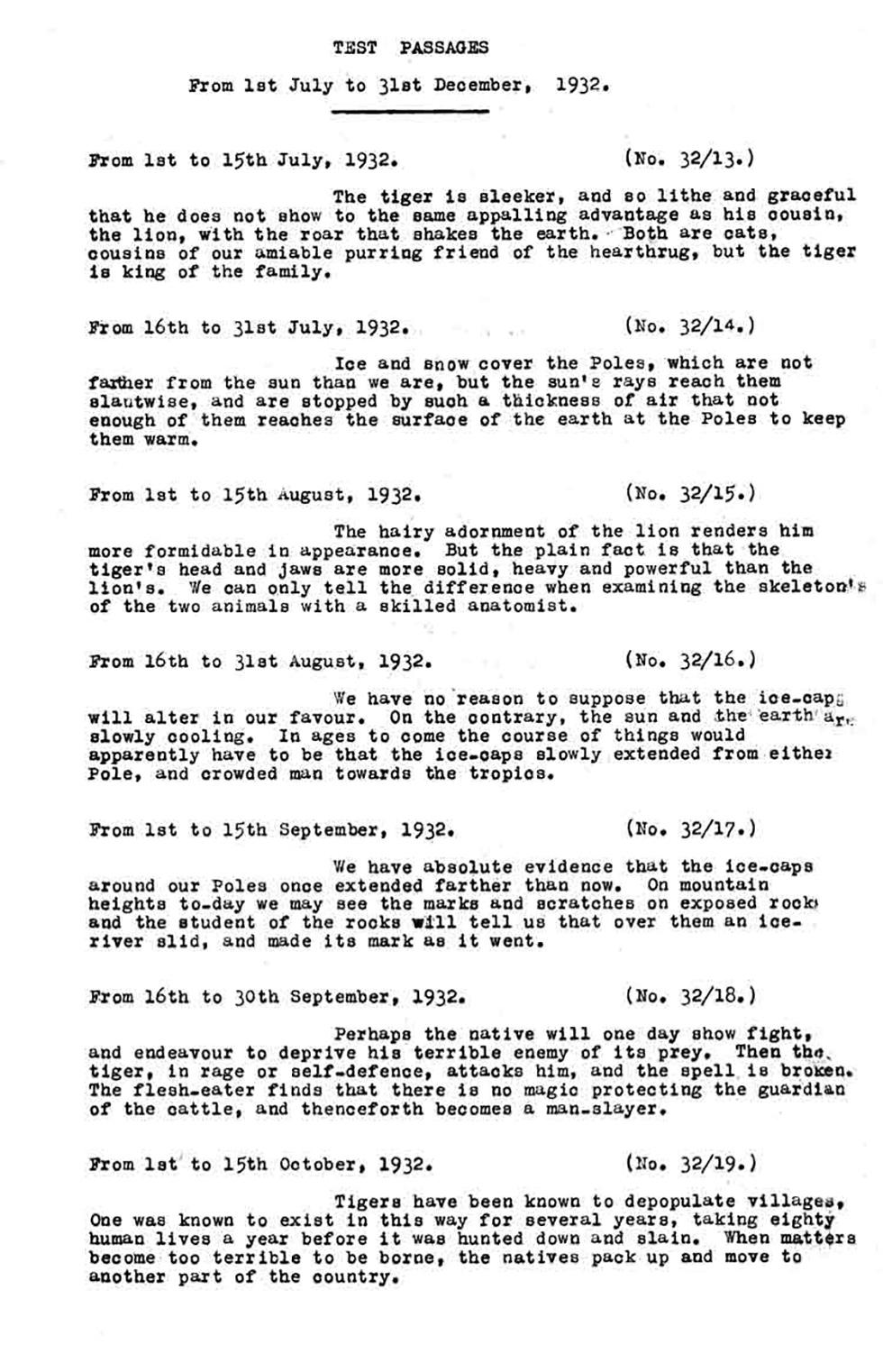
Passages from a dictation test used in 1932.
Aboriginal and Torres Strait Islander people should be aware that the National Archives' website and collection contain the names, images and voices of people who have died.
Some records include terms and views that are not appropriate today. They reflect the period in which they were created and are not the views of the National Archives.


Passages from a dictation test used in 1932.
TEST PASSAGES
From 1st July to 31st December, 1932.
[Line break]
From 1st to 15th July, 1932. (No. [Number] 32/13.)
The tiger is sleeker, and so lithe and graceful that he does not show to the same appalling advantage as his cousin, the lion, with the roar that shakes the earth. Both are cats, cousins of our amiable purring friend of the hearthrug, but the tiger is king of the family.
From 16th to 31st July, 1932. (No. 32/14.)
Ice and snow cover the Poles, which are not farther from the sun than we are, but the sun's rays reach them slantwise, and are stopped by such a thickness of air that not enough of them reaches the surface of the earth at the Poles to keep them warm.
From 1st to 15th August, 1932. (No. 32/15.)
The hairy adornment of the lion renders him more formidable in appearance. But the plain fact is that the tiger’s head and jaws are more solid, heavy and powerful than the lion’s. We can only tell the difference when examining the skeleton’s [sic] of the two animals with a skilled anatomist.
From 16th to 31st August, 1932. (No. 32/16.)
We have no reason to suppose that the ice-caps will alter in our favour. On the contrary, the sun and the earth are slowly cooling. In ages to come the course of things would apparently have to be that the ice-caps slowly extended from either Pole, and crowded man towards the tropics.
From 1st to 15th September, 1932. (No. 32/17.)
We have absolute evidence that the ice-caps around our Poles once extended farther than now. On mountain heights to-day [sic] we may see the marks and scratches on exposed rocks and the student of the rocks will tell us that over them an ice-river slid, and made its mark as it went.
From 16th to 30th September, 1932. (No. 2/18.)
Perhaps the native will one day show fight, and endeavour to deprive his terrible enemy of its prey. Then the tiger, in rage or self-defence, attacks him, and the spell is broken. The flesh-eater finds that there is no magic protecting the guardian of the cattle, and thenceforth becomes a man-slayer.
From 1st to 15th October, 1932. (No. 32/19.)
Tigers have been known to depopulate villages. One was known to exist in this way for several years, taking eighty human lives a year before it was hunted down and slain. When matters become too terrible to be borne, the natives pack up and move to another part of the country.
Learn how to interpret primary sources, use our collection and more.
